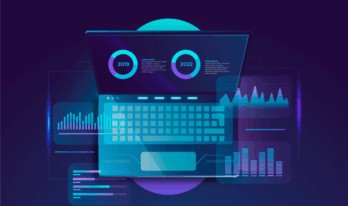All kinds of industries generate a large amount of data, also known as big data. Business intelligence implements processes surrounding data gathering and data analysis.
Big data analytics trends have drastically changed over the years, ranging from an organizational approach to a business-driven data approach.
Since it embraces all areas of agile life cycle development business, organizations need to implement the latest data analytics trends.
This never-ending stream of data can be challenging when it comes to drawing insights from a large data pool of unstructured data.
4 Big Data Analytics Trends
Here are “4 Big Data Analytics Trends” that will take your business to new heights:
Self-service Business Intelligence (BI):
The tasks that are carried out by the business users themselves instead of passing them on to the IT teams are referred to as self-service BI.
Users get the freedom to use BI tools, which gives them a sense of responsibility, user independence, and self-sufficiency.
Predictive Big Data Analytics Tools:
Predictive analytics is an extension of data that refers to the extraction of information from existing data sets, to forecast future probabilities.
And also, it estimates future data, because of which it holds the capability to detect possible errors from its definition.
It indicates the possibility of events that can happen in the future, including risk assessment and a few alternative scenarios.
In business, experts use predictive analytics to analyze historical facts and big data to better understand products, partners, and customers.
Connected Cloud:
For someone who stays updated with big data BI trends, the presence of the cloud is not new. The expansion of cloud-based tools across bundles of data has pushed more companies to move their business to the cloud.
In 2019, organizations will learn to embrace the power of cloud-based applications. It includes analytics, data processing, data modeling, cloud computing, and much more.
Machine learning:
To dispose of data that is no longer in need or is out of date and to protect the integrity of stored data, machine learning can be used. Machine learning refers to an automated data flush technique.
The flushed data is not permanently deleted. The algorithms are there to back up your data, and you can also use these algorithms to re-create data.
Above all, with these new trends in business intelligence in the market, there is no denying the fact that big data trends have a lot to offer organizations that are on the lookout for growth opportunities.
Concluding Remarks on Business Intelligence and Big Data Analytics!
Business intelligence is a crucial strategy for businesses in the contemporary digital age. Organizations can get assistance in audience and competitor analyses alongside identifying the risks and opportunities in their specific industries. On the other hand, big data analytics is important for appropriate BI implementation since the latter utilizes large amounts of data. Read more informative blogs at WisdomPlexus!
You may also like to read:
Artificial Intelligence Predictions for Every Business to know in 2023
Identifying AIOps Trends and Predictions for 2024
Six Ways in which Artificial Intelligence can be useful for IT operations




